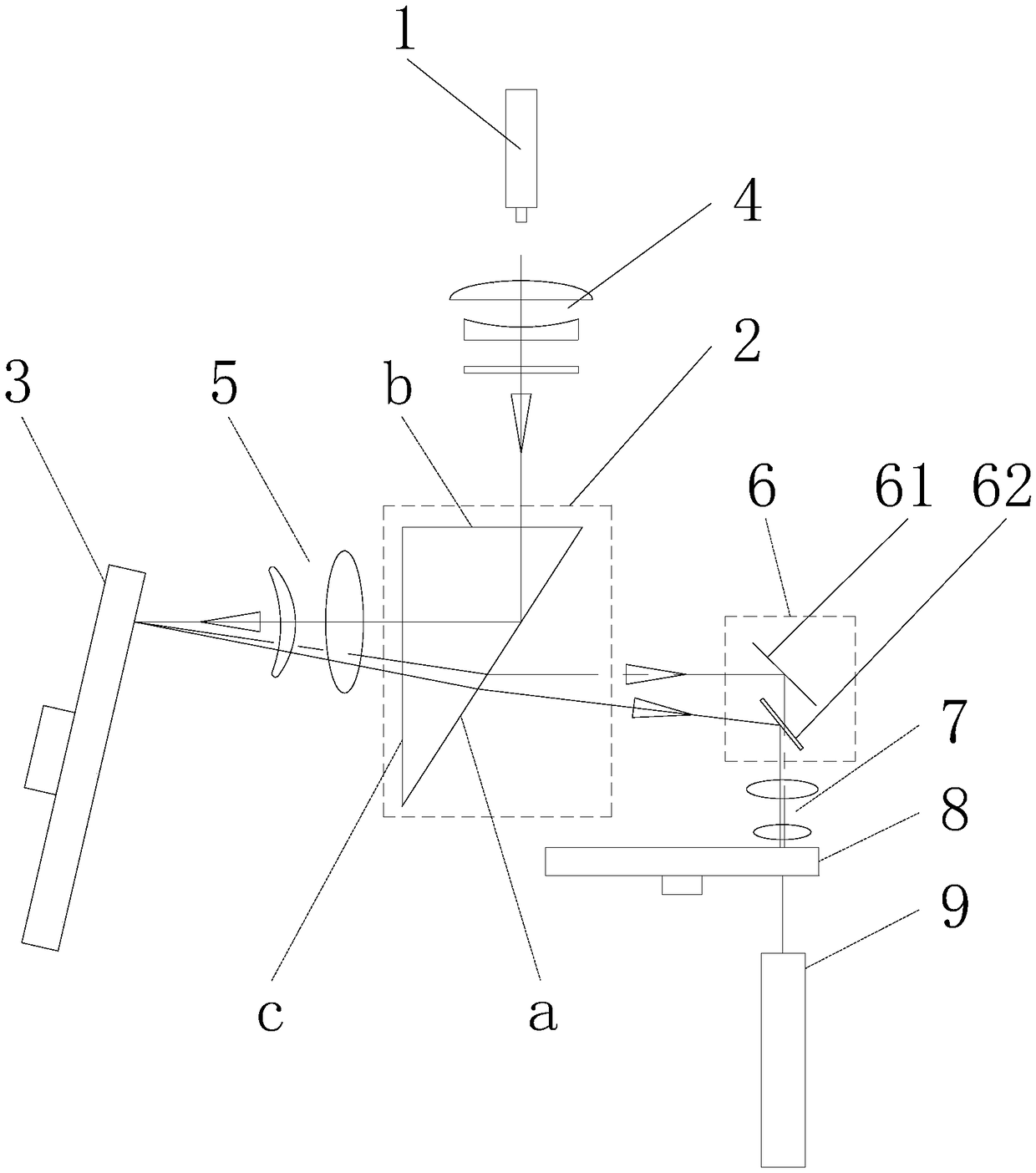Compact projection light source
A compact, light source technology, applied in the field of projection light sources, can solve the problems of unfavorable miniaturization, complex optical path, large occupied volume, etc., and achieve the effects of simple structure, small occupied volume and low production cost
- Summary
- Abstract
- Description
- Claims
- Application Information
AI Technical Summary
Problems solved by technology
Method used
Image
Examples
Embodiment 1
[0028] Such as figure 1 As mentioned above, the light source 1 is a blue laser light source, and the phosphor area on the fluorescent wheel 3 includes a green phosphor area, a red phosphor area and a reflection area;
[0029] A beam shaping part 4 is arranged between the light source 1 and the prism assembly 2. The light emitted by the light source 1 is compressed and shaped by the beam shaping part 4. The beam shaping part 4 can use a focusing lens and a diffuser, and the focusing lens can shape and compress the light spot and diffuse it. The chip is used to eliminate speckle, and at the same time make the spot distribution uniform, and improve the excitation efficiency of the phosphor on the phosphor wheel;
[0030] A focusing component 5 is set between the prism assembly 2 and the fluorescent wheel 3 to transmit and focus the reflected light coming from the prism assembly 2, to shape and transmit the radiated fluorescence excited on the fluorescent wheel 3, and to transmit ...
Embodiment 2
[0040] The difference from Embodiment 1 is that the prism assembly 2 adopts a TIR prism group, such as figure 2 As shown, in this embodiment, the TIR prism group is composed of two triangular prisms, including prism one 21 and prism two 22, prism one 21 has AB surface, AC surface and BC surface, BC surface is the first prism surface, light source The blue laser light emitted by 1 enters the prism-21 from the AC surface and exits from the AB surface to the fluorescent wheel 3 after total reflection on the BC surface, and the blue laser light and radiated fluorescence reflected from the fluorescent wheel enter the prism-21 from the AB surface It is incident on the BC surface at an angle smaller than the critical angle and then transmitted, and then the blue laser light and radiated fluorescence reflected from the fluorescent wheel are transmitted through the prism 22 and enter the light-combining component 6 to combine light and then output.
Embodiment 3
[0042] Such as image 3 As shown, the difference from Embodiment 1 is that the light-combining component 6 adopts a focusing lens group, and the blue laser light and radiated fluorescent light reflected from the fluorescent wheel are focused and transmitted by the focusing lens group and then enter the focusing element 7, and the optical path no longer needs refraction. Turn, making the optical path more compact and reducing the occupied volume.
PUM
 Login to View More
Login to View More Abstract
Description
Claims
Application Information
 Login to View More
Login to View More - R&D Engineer
- R&D Manager
- IP Professional
- Industry Leading Data Capabilities
- Powerful AI technology
- Patent DNA Extraction
Browse by: Latest US Patents, China's latest patents, Technical Efficacy Thesaurus, Application Domain, Technology Topic, Popular Technical Reports.
© 2024 PatSnap. All rights reserved.Legal|Privacy policy|Modern Slavery Act Transparency Statement|Sitemap|About US| Contact US: help@patsnap.com










